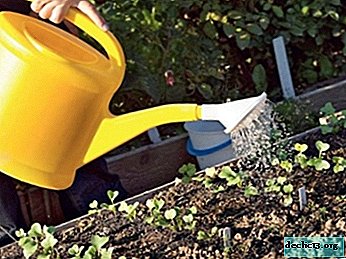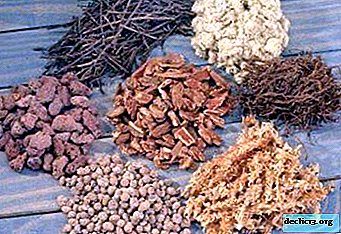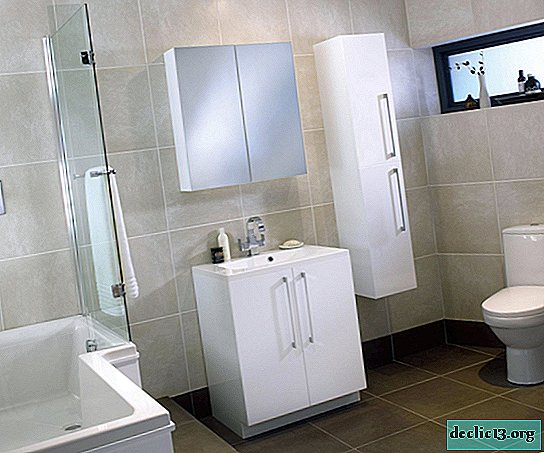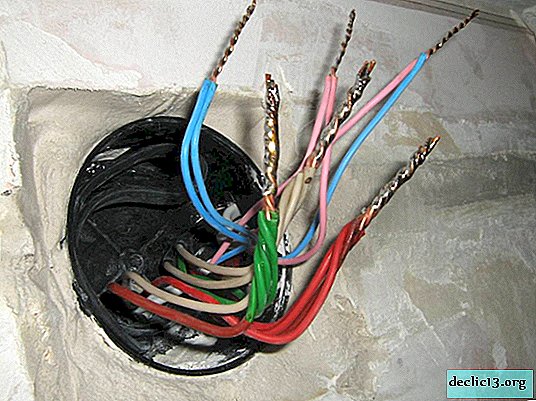Floor tiles for hallways and corridors - choose the type, quality and design
Many of us choose flooring based on its appearance and cost. But floor tiles, like other types of finishing materials, have a lot of important technological characteristics that will have a direct impact on the duration of use and the surface's resistance to various types of influences. In order to choose a high-quality tile for a particular room, and in our case these are hallways and corridors, it is necessary to determine the technical requirements for the coating. It is important to understand what kind of loads and with what intensity the floor covering will be exposed, what the temperature regime and humidity indicator of the room will be, whether the surface will need to be cleaned with chemically active substances.
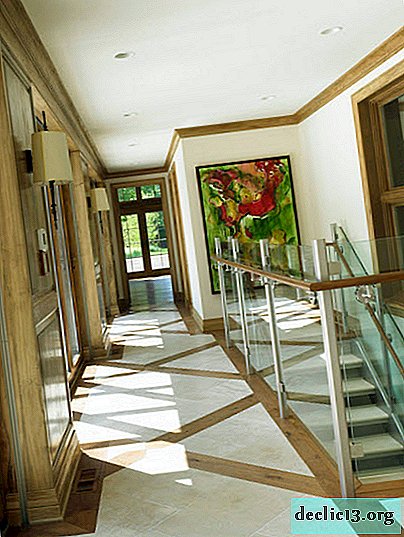


Having determined the selection criteria for flooring for a difficult, from the point of view of traffic and types of mechanical and other influences, hallway, it will be possible to proceed to a direct design decision. As a rule, in the technical documentation for any type of tile, its technological and operational characteristics are indicated. In addition, the packaging is supplied with special markings that can also tell a lot about the "nature" of the facing material. Let's try together to figure out what kind of floor tiles to purchase for repair work in hallways, halls, corridors and other auxiliary rooms.



Characteristics of floor tiles
Material porosity
This is a very important characteristic of the tile - other indicators of strength, durability and wear resistance of the material depend on it. The porosity of the tile indicates the amount of water that the product can absorb. It is expressed as a percentage, indicating an increase in the weight of the tile after a two-hour stay in water. Obviously, the tile that will protect the floors in the hallway should have a minimum porosity, because moisture (snow, dirt) from our shoes and umbrellas will get on the surface. To obtain a low porosity of the material, a high firing temperature of the products is required. As a result of such firing, the material gets a lot of shrinkage, its bending strength increases, and for non-glazed tiles - wear resistance.



The floors in the hallway are washed much more often than in other rooms of a private house or apartment. Experts recommend purchasing floor tiles for private households with a porosity of no more than three percent, and for apartment buildings - less than six.



Hardness and wear resistance of tiles
For halls, hallways and vestibules of residential buildings, it is recommended to use tiles with a high abrasion class as a floor covering. For facing corridors and hallways, class 3 or 4 material is suitable. And at the very entrance to the room you can put unglazed tiles or ceramic granite (porcelain stoneware). It will also be necessary to take into account the surface qualities of products - hardness, resistance to chemicals, cleanability.



When choosing a tile for the hallway floors, it is also important to take into account other indicators, including the color "chromatic structure" and gloss. With the wear of products, surface contamination increases. Spots are evident on light and plain surfaces and are less noticeable on dark, grainy or products with a variegated pattern. On glossy, shiny surfaces, scratches are very clearly visible. This factor must be taken into account by housewives who often wear stilettos.



Mechanical characteristics
All the mechanical properties of the tile are associated with the ability to resist various loads - from the weight of the furniture to the movement of bags on wheels. Most often, attention is paid to two types of similar characteristics - bending resistance and flexural strength. Bending resistance directly depends on the hygroscopicity of the material - the higher the porosity of the tile, the lower this indicator. For example, for porcelain stoneware, the moisture absorption is 0.5%, and for single fired tiles - 10%. Correspondingly distributed and bending resistance. The bending strength depends not only on the porosity of the product, but also on its thickness. The greater the thickness of the tile, the higher the tensile strength.




The strongest (and most frequent) effect on the tile surface comes from the sole of our shoes, which can be made of various materials, including metal heels. In addition, the more dirt on the soles of our shoes, the wear of the flooring is now faster.



The durability of a tile coating is most easily characterized by two indicators - surface hardness on the Mohs scale and wear resistance of ceramics. On a surface hardness scale, minerals can be arranged in the following sequence:
- talc - 1;
- gypsum - 2;
- calcite - 3;
- fluorite - 4;
- apatite - 5;
- feldspar - 6;
- quartz - 7;
- topaz - 8;
- corundum - 9;
- diamond -10.



The wear resistance of ceramic tiles is measured in arbitrary units from 1 to 5 on the P.E.I. scale. The group (1-5), to which a particular tile model belongs, is indicated on the package. In order not to load you with information about each of the five groups, we only say that for rooms of hallways, corridors and halls, characterized by a fairly high traffic intensity, medium abrasion of the surfaces, products belonging to the fourth group are suitable (in extreme cases, you can use material from the collections of the third groups).



Safety requirements
Obviously, the basic safety requirement is slip resistance. This characteristic is very important for the flooring of dwellings that are constantly exposed to moisture, among other things. The parameter that determines the ability of a surface to prevent slipping of an object located on it is measured by the coefficient of friction. To increase the sliding resistance on dry surfaces, corundum-coated tiles are often used.


Maintenance and care of flooring
The durability of ceramic tile flooring is largely dependent on how it is taken care of. For routine, scheduled surface cleaning, simple cleaners can be used to avoid strong acid-based formulations. They can damage not so much the tile itself as inter-tile joints sealed with cement-based products. If the seams between your products are sealed with epoxy compounds (sealants), then such a surface will have a high level of resistance to chemical cleaning agents.



When cleaning the ceramic flooring, it is necessary to abandon the use of abrasive products - powders with large particles and especially metal brushes. On glossy surfaces all scratches and chips are perfectly visible. Glazed surfaces can be effectively cleaned using special products (sold in all household chemical stores), without the use of powders and pastes. For non-glazed products (clinker, porcelain stoneware), it is necessary to use special fluids that prevent the appearance of spots on the tiles and tile joints.



Types of ceramic tiles for flooring
Tiles differ in material and manufacturing method, which in turn is divided into the molding method, pre-drying time, the presence of glazing and the number of firing. All ceramic tiles are classified into unglazed single firing and glazed single and double firing.

Previously, tiles were made in a bicotour way - they were fired after molding, glaze was applied and once again fired with it. This tile has a fairly high porosity - up to 10%, because it was molded naturally and dried for a short time (the thickness of the products is 5-7 mm).


The modern method of tile production is monotonous - the finished mixture is pressed, dried, glazed and fired. During drying, such a tile is substantially compacted and reduced in size. Products are heavier, more thick (9-13 mm) and with porosity not exceeding 3%.


The following ceramic tile options are most popular:
- unglazed single firing (cotto, clinker, porcelain tile);
- glazed double firing (faience, majolica, cottoforte);
- glazed single firing (single firing white and red).



Non-glazed products have a rough (natural) surface. Such a tile is very durable, but in order to prevent the appearance of the coating from being damaged during operation, it must be coated with a special compound.


In addition to the composition and manufacturing method, floor tiles differ in shape - can be square, rectangular, curly, in the form of a polyhedron. Also, the choice of tiles will need to be made according to the size of the products. Large tile looks great, visually increases the space. But with the wrong calculation of the number of tiles, there will be a lot of waste. Also, the visual expansion of the volume of the room (and the hallways and corridors in our apartments often do not differ on a large scale) is facilitated by laying the products diagonally.



Layout methods for floor tiles in auxiliary rooms
Manufacturers of finishing materials offer ready-made collections in which all the necessary elements for drawing up the flooring are collected. Often used is the technique of drawing up a motley carpet with a fringing in the center of the corridor or hallway and performing the rest of the space in a monophonic version. Such flooring can become the center of attention of the entire room. Colorful flooring will require a plain finish on the rest of the surfaces.





The so-called patchwork technique involves the arbitrary arrangement of square floor tiles with colorful ornaments. The coating resembles a patchwork bedspread, in the manufacture of which the same colors were used, but in different variations of the patterns. Such a floor looks accent, colorful and attracts attention, becoming the focal point of the room.




The familiar “chess” is the arrangement of tiles in two contrasting colors (most often white and black) in a checkerboard pattern. Such an arrangement of products visually increases the volume of the room, becoming a bright and colorful spot in the image of the interior. Surprisingly, such an original floor covering integrates perfectly into rooms decorated in various styles - from classic to modern. The only thing that needs to be taken into account - such a colorful floor design requires a more calm, neutral execution of the rest of the finish.






Ceramic tiles imitating wooden floors are laid in the same way as floorboards. At the same time, there is no need to compare successive dies of ceramic products - the “natural” pattern of wood is good because its surface is universal.



As well as parquet, ceramic tiles can be laid "herringbone". The original, but at the same time classic design of the floor covering will look attractive even in a light, neutral color. Laying products "herringbone" has various modifications.





In custody
The choice of flooring for the hallway is ambiguous - in addition to ceramic tiles. There are other options for protecting floors in auxiliary rooms, the hearts of which are linoleum, laminate, parquet and even flooring. But ceramic tiles have a number of undeniable advantages:
- strength and wear resistance of ceramic (tile) tiles are significantly higher than many alternative materials;
- low water absorption of products provides protection of floor surfaces from leaks, which is important for rooms that are constantly in contact with dirt, thawed snow and water;
- from the point of view of hygiene, tile is the most resistant to the formation of fungus and mold material;
- a ceramic-coated floor, practical and convenient from the point of view of cleaning, does not cause trouble for the owners - a minimum amount of time is spent on its cleaning;
- a wide range of models - various sizes, configurations and shapes, many options for surface texture, imitation wood, stone and brick, a rich color palette, glossy or matte finish.


The disadvantages of ceramic tiles include only a fairly high cost (compared to linoleum, for example). Also, floor tiles have two conflicting properties - smooth tiles are easy to use, but can be very slippery, and rough does not have such drawbacks, but is much worse cleaned.







